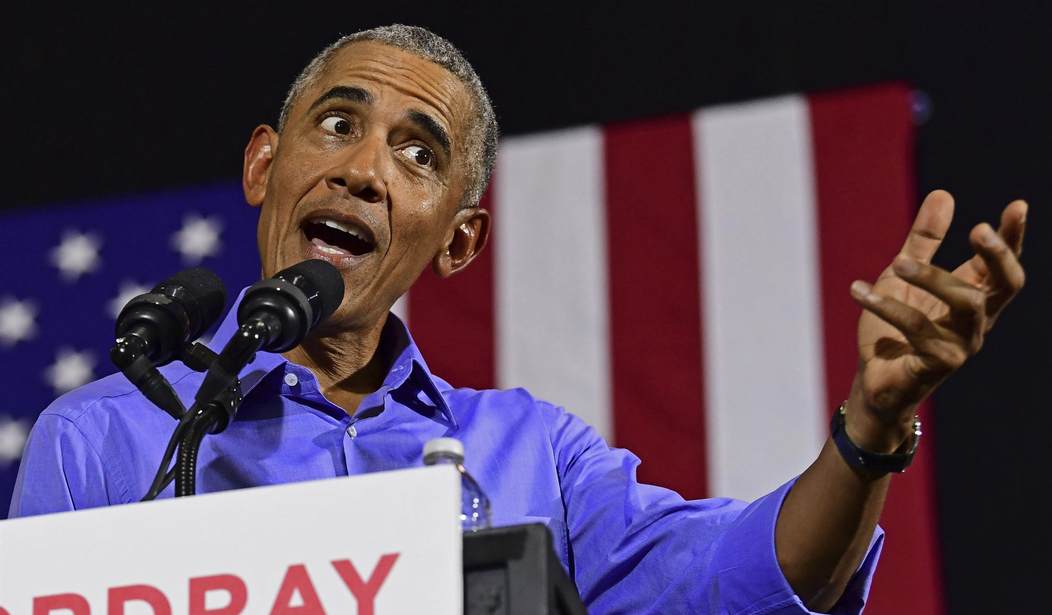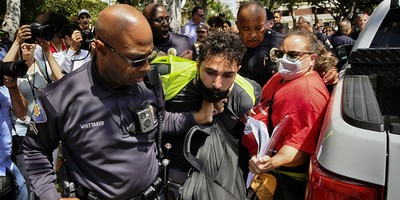This has been known for a while: the Obama Department of Justice has spied on journalists. They tracked James Rosen, formerly of Fox News. They seized the phone records from Associated Press reporters. Now, The Knight First Amendment Institute at Columbia University and Freedom of the Press Foundation have released document showing that in 2015, the Obama DOJ has secret rules to target journalists under FISA. The Freedom of the Press Foundation and Knight filed a FOIA lawsuit to obtain the memos:
While civil liberties advocates have long suspected secret FISA court orders may be used (and abused) to conduct surveillance on journalists, the government—to our knowledge—has never acknowledged they have ever even contemplated doing so before the release of these documents…
The FISA court rules below are entirely separate from—and much less stringent—than the rules for obtaining subpoenas, court orders, and warrants against journalists as laid out in the Justice Department’s “media guidelines,” which former Attorney General Eric Holder strengthened in 2015 after several scandals involving surveillance of journalists during the Obama era.
When using the legal authorities named in the “media guidelines,” the Justice Department (DOJ) must go through a fairly stringent multi-part test (e.g. certifying that the information is critical to an investigation, that it can’t be obtained by other means, and that the DOJ exhausted all other avenues before doing so) before targeting a journalist with surveillance. They must also get approval from the Attorney General.
With the FISA court rules, there is no multi-part test that we know of. The DOJ only must follow its regular FISA court procedures (which can be less strict than getting a warrant in a criminal case) and get additional approval from the Attorney General or Assistant Attorney General. FISA court orders are also inherently secret, and targets are almost never informed that they exist
Recommended
The Knight First Amendment Institute has more:
The Media Guidelines are far from perfect, however, in their protection of journalists. One persistent criticism is that they do not apply to the use of National Security Letters (NSLs) or surveillance conducted under FISA. That’s especially troubling because these tools permit surreptitious surveillance with little accountability to the public for their use. FISA, for example, allows intelligence agencies to collect the email communications of a person deemed to be an agent of a foreign power, and NSLs permit the FBI to issue warrantless requests to third parties for non-content records.
[…]
Specifically, the memo mandates that FISA applications for surveillance targeting known news organizations or journalists be presented to the Attorney General or Deputy Attorney General for approval prior to submission to the Foreign Intelligence Surveillance Court, unless, upon direction of the Attorney General or Deputy Attorney General, they are referred to the Assistant Attorney General for NSD for disposition. The memo further provides that, once approved, subsequent applications to monitor the same target should be presented to the Assistant Attorney General for NSD unless circumstances related to the target’s status as a journalist or media organization have changed.
The documents raise important questions about the government’s surveillance of news organizations and journalists.
First, how many times has the government used FISA to target news organizations and journalists? Press advocates have long expressed concern that the uncertainty surrounding the use of FISA to monitor journalists’ conversations chills their sources from speaking. Although we now have good evidence that the government does, in fact, use FISA to target journalists, we don’t know how often it does so, because FISA applications and court orders are kept confidential.
Second, given the government’s apparent concession that the DOJ’s procedures for processing FISA applications are not sensitive, why does it continue to withhold the FBI’s procedures for processing NSLs directed to the media.
Both organizations note that the NSLs and FISA surveillance was exempt from the media guidelines. Freedom of the Press also added that, given the Trump White House’s confrontational attitude towards the press, have they used this method to track journalists. Yet, this is apples and oranges. The media thinks Trump is attacking the media because he mocks them at rallies, whereas the Obama administration has secret rules to use secret courts to obtain warrants to track journalists. Granted, take Obama and Trump out of this, it’s troubling that government would do this. It does impede on press freedom. How often these warrants are obtained and if it’s still going on remains a secret. With the Kavanaugh news, this will likely be buried, but it’s still a salient issue, especially when the media cries that they’re under threat because Trump tweets something bad about them. Actually, it seems the Obama White House/DOJ was doing things more corrosive to press freedom than Trump’s Twitter account or rallies ever could.

























Join the conversation as a VIP Member